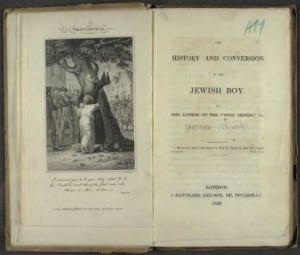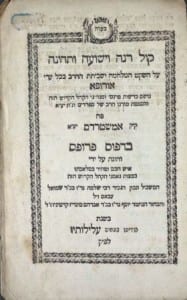Uncovering UCL’s Jewish Pamphlet Collections
By Vanessa Freedman, on 24 July 2014
We have just started work on an exciting project to uncover a hidden treasure in UCL Special Collections: the Jewish pamphlets.

A sermon preached in the Jews Synagogue on Friday, February 6, 1756, being the day appointed by authority for a general fast, by Issac Netto [Nieto], translated from Spanish by the author. London, 1756.
Ref: SR MOCATTA PAMPHLETS RN 20 NIE
However, the library was quickly re-constituted through donations from many individuals and organisations, including the Jewish collections of the Guildhall Library, and the extensive libraries of the journalist Asher Myers and the American scholar Cyrus Adler. It continued to be enlarged after the war; notable additions to the pamphlet collection came from the libraries of the historian Albert Hyamson and the Canadian rabbi Aaron David Meldola de Sola. The Mocatta Library was merged with UCL’s other Jewish collections in 1990.

The history and conversion of the Jewish boy, by the author of the “Twin Sisters”, &c. London, 1829. From the Asher Myers collection.
Ref: SR MOCATTA PAMPHLETS A 106 SAN
The pamphlet collection covers a wide range of subjects throughout the field of Jewish Studies, particularly Anglo-Jewish history, Zionism and liturgy. The pamphlets date from 1601 onwards, and are in English, Hebrew and a number of other languages. Many of them are held in very few libraries, while some are extremely rare.

Thanksgiving for the cessation of war in Europe. Amsterdam, 1801 or 1802.
Ref: SR MOCATTA PAMPHLETS RP 69 ABB
Detailed records for each pamphlet will be available to researchers and the general public via UCL’s Explore search tool, as well as COPAC and Search25. The material can be requested for teaching or research by contacting UCL Special Collections.
The first phase of the project will also include a small exhibition to showcase some of the most interesting items from the collection, and a conservation survey. By their nature pamphlets tend to be fragile, and this will also enable us to identify whether conservation work is required so that they can be preserved for future use.
 Close
Close


